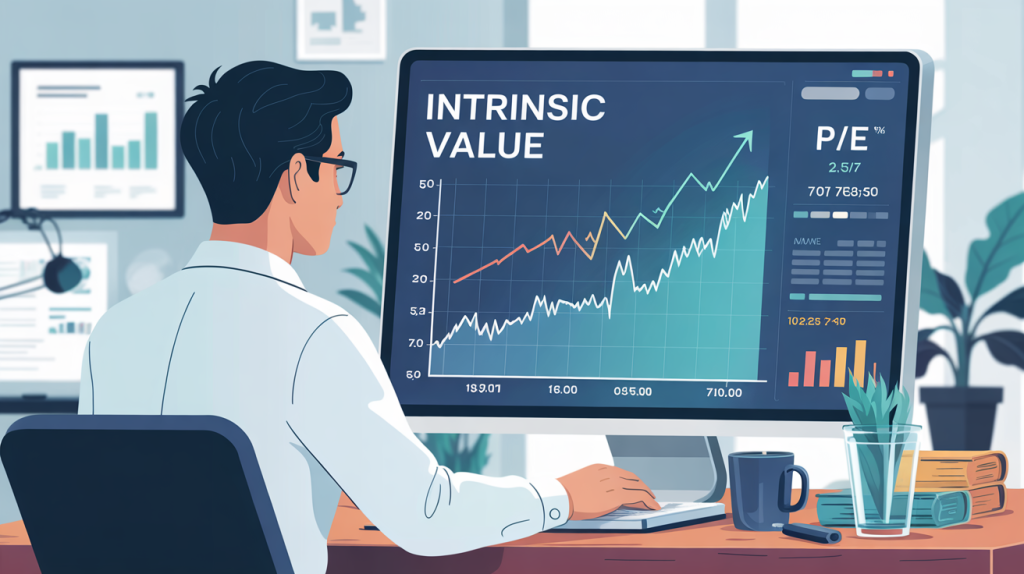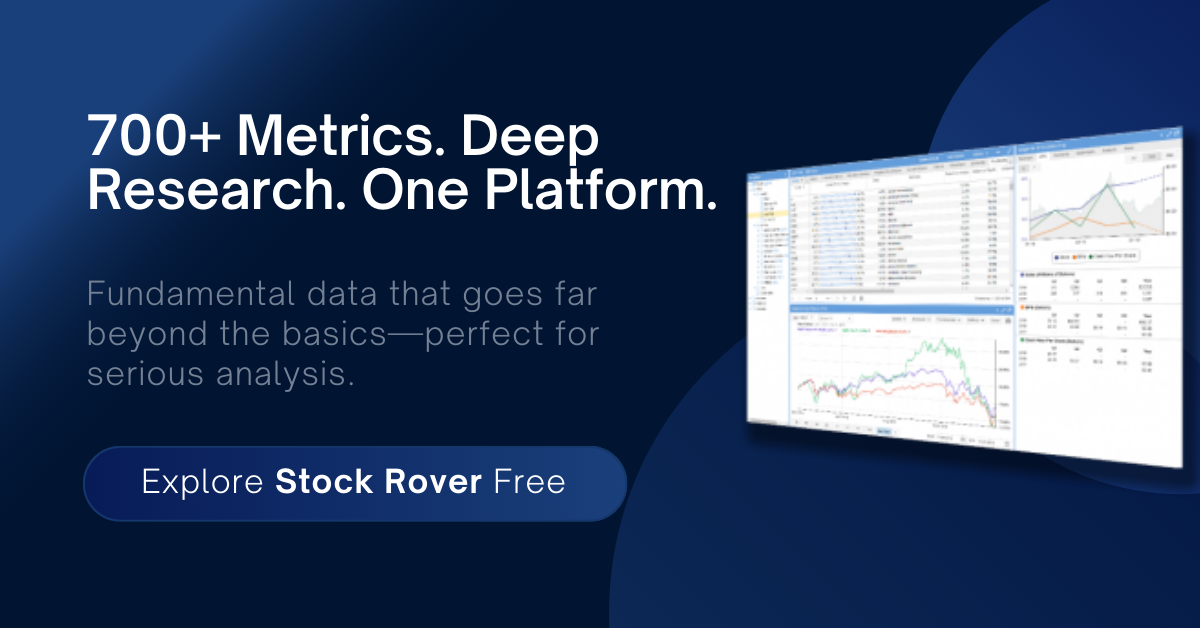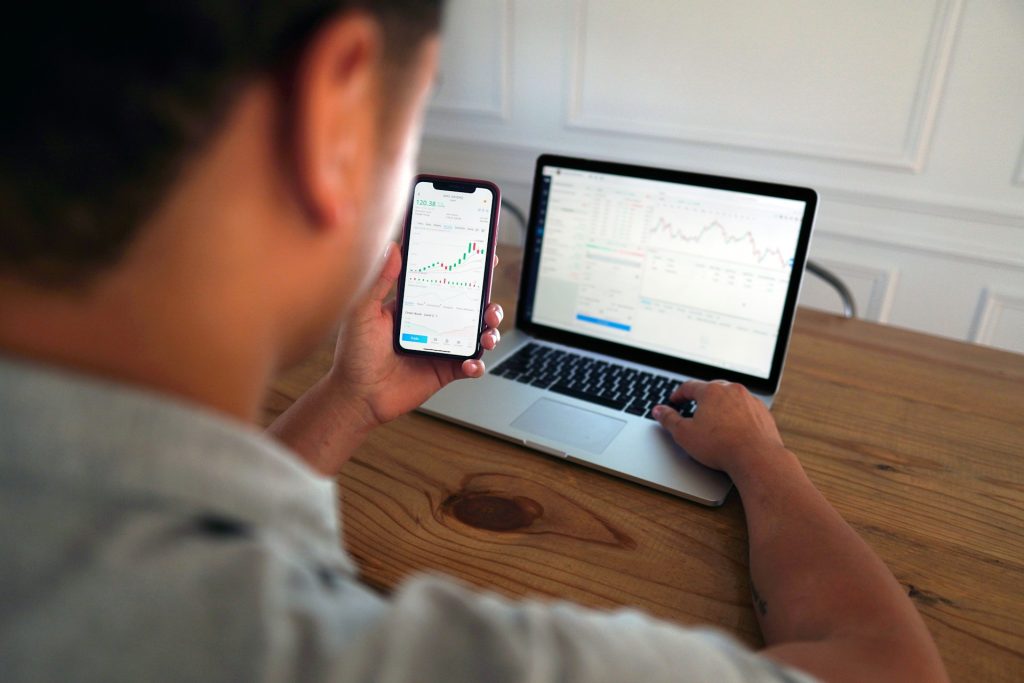
When the Market Misprices Risk, Intrinsic Value Shifts Without Warning
You hear it all the time: “Interest rates are rising,” “The Fed is pivoting,” “Bonds are back.” But few investors stop to ask what this actually means for the companies they own. Even fewer understand how changes in interest rates directly affect the intrinsic value of a stock. In this article, you’ll learn how interest rates feed into valuation models, how most investors misread the impact, and why getting this right can give you a decisive edge. If you want to stop reacting to headlines and start positioning your portfolio with clarity, this is the signal you’ve been missing.
The Link Between Interest Rates and Intrinsic Value
Before you can exploit the impact of interest rate moves, you need to understand the mechanics.
Interest rates influence the discount rate used in valuation models like DCF. Higher interest rates increase the discount rate, which reduces the present value of future cash flows and lowers the intrinsic value of a business. Lower rates do the opposite, raising valuations and fueling risk appetite. The effect is especially pronounced in long-duration assets, such as high-growth stocks whose earnings are far into the future.
One of the simplest valuation heuristics we use is this: the earnings yield of a stock (E/P) should be higher than the yield on the 10-year Treasury bond. If the 10-year yield is 4%, we generally want at least an 8%–10% earnings yield to consider the stock investable. That translates into a maximum P/E ratio of 12.5 to 10. If rates rise to 5%, that same 10% earnings yield would now imply a maximum P/E of 10. The math forces discipline. When rates rise, the price you can afford to pay must come down.
Why Most Investors Overlook This Critical Variable
If this is basic finance theory, why do so many investors get it wrong?
Many use static models with fixed discount rates, ignoring macro shifts. Others anchor to target prices based on past interest rate regimes. Index investors often ride the wave without understanding what’s underneath. As a result, they misprice risk and valuation.
In 2022, when the Fed began hiking aggressively, many high-flying growth stocks saw steep declines. But for those paying attention to how discount rates affect valuation, this wasn’t a surprise, it was baked into the math.
☕ Bold Moves Start With Strong Coffee
“Buy the Dip” Mug – 11 oz Ceramic
Fuel your morning and your market confidence with this clean, minimal mug made for investors who know volatility is opportunity.
- Crisp black-and-white design with “Buy the Dip” printed on both sides
- Durable ceramic construction – microwave and dishwasher safe
- The perfect desk-side reminder to stay rational when others panic
Start your trading day with conviction.
How to Adjust Valuation Models in a Changing Rate Environment
This is where a disciplined value investor sets themselves apart.
To stay accurate, we update our discount rate to reflect changes in the risk-free rate (usually the 10-year Treasury yield) plus an equity risk premium. For cyclical or highly leveraged businesses, we may add additional risk adjustments. We also revise long-term growth assumptions more conservatively during tightening cycles, especially in rate-sensitive sectors like real estate, tech, and utilities.
This updated valuation estimate then feeds into our Kelly Criterion framework. If the expected return falls due to a compressed margin of safety, the recommended allocation to that stock will shrink or even drop to zero.
When Falling Rates Inflate Valuations Beyond Reason
Rising rates aren’t the only concern, falling rates can be just as dangerous.
In a low-rate environment, investors become too optimistic. They chase growth stocks with infinite duration and no earnings, justifying sky-high P/E multiples because “money is free.”
But when rates normalize, these speculative names often collapse. Our strategy avoids this trap. We always require a margin of safety that reflects the real opportunity cost of capital. When interest rates are suppressed, we stay skeptical of valuations that assume the good times will last forever.
The Takeaway: Tune Out Noise, Watch the Signal
You can’t control where interest rates go next. But you can control how you respond.
The key is to treat interest rates not as background noise, but as a signal that directly alters intrinsic value. By constantly updating your valuation models, recalibrating your expected returns, and applying disciplined thresholds like required earnings yields, you put yourself ahead of most investors who still fly blind.
🌍 Travel Well. Age Beautifully.
Handcrafted Leather Passport Cover – Italian Leather
Designed for the discerning traveler, this handcrafted passport cover combines timeless elegance with practical utility. Made from full-grain Italian leather, it protects your essentials while aging with the grace of every journey.
- Full-grain, vegetable-tanned leather from Tuscany — supple, durable, and rich in character
- Four compartments + leather flap for passport, boarding pass, and travel cards
- Saddle stitched by hand with polished, burnished edges
Your travels deserve more than a barcode and plastic sleeve.
👉 Shop the Passport Cover – $100

Shailesh Kumar, MBA is the founder of Astute Investor’s Calculus, where he shares high-conviction small-cap value ideas, stock reports, and investing strategies.
His work has been featured in the New York Times and profiled on Wikipedia. He previously ran Value Stock Guide, one of the earliest value investing platforms online.
Subscribe to the Inner Circle to access premium stock reports and strategy insights.
Featured in:








